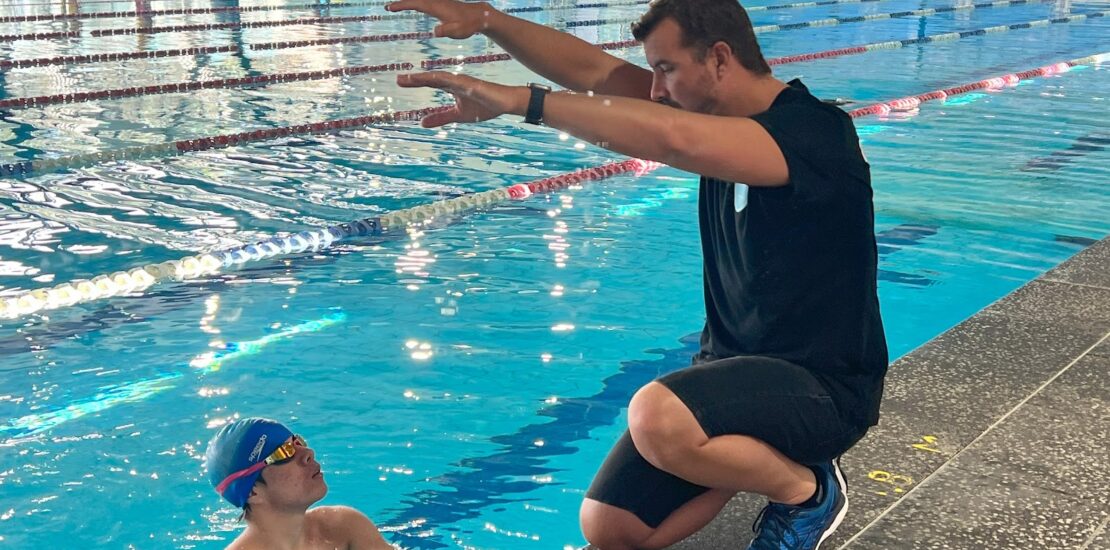- August 31, 2023
- Posted by: swimlyadn1m
- Category: Swimly Blog

At Swimly, we are committed to helping you become a better swimmer by providing expert guidance, training tips, and techniques to improve your swimming performance. Our team of experienced coaches andintructors are passionate about swimming and are dedicated to helping you reach your swimming goals. In this article, we will share with you some valuable insights and practical tips to help you improve your swimming technique and excel in the water.
Importance of Technique in Swimming
Swimming is not just about brute strength and endurance; technique plays a critical role in efficient and fast swimming. A flawless technique allows you to glide through the water with minimum resistance, conserve energy, and maintain speed. Poor technique, on the other hand, can lead to drag, inefficiency, and slow swimming times. Therefore, it is crucial to focus on developing proper swimming technique to enhance your performance in the water.
Key Elements of Good Swimming Technique
To swim efficiently and effectively, you need to master the key elements of good swimming technique. These include body position, breathing, arm stroke, leg kick, and timing. Let’s take a closer look at each of these elements.
Body Position
Maintaining a streamlined body position is crucial for efficient swimming. Your body should be parallel to the surface of the water, with your head, hips, and feet forming a straight line. Avoid lifting your head too high or letting your hips sink, as this can create drag and slow you down. Practice swimming with a tight core and a flat body position to minimize resistance and improve your speed in the water.
Breathing
Proper breathing technique is essential for efficient swimming. Many swimmers struggle with breathing, as it can disrupt their rhythm and affect their stroke technique. To breathe efficiently, exhale slowly and completely underwater and inhale quickly and deeply when your face is out of the water. Practice bilateral breathing (breathing on both sides) to develop balanced breathing and improve your swimming symmetry.
Arm Stroke
The arm stroke is a crucial component of swimming technique. A powerful and efficient arm stroke propels you through the water and generates forward momentum. Start your arm stroke with a high elbow catch, pulling your hand through the water with a relaxed and fluid motion. Maintain a steady and even pull, and finish with a strong push to maximize propulsion. Focus on a smooth and efficient arm stroke to improve your swimming speed and endurance.
Leg Kick
A strong and coordinated leg kick is essential for efficient swimming. Your legs should work in harmony with your arms to propel you through the water. Avoid excessive leg movement or kicking from the knees, as this can create drag and reduce your efficiency. Instead, kick from your hips with a small and fast flutter kick or a powerful dolphin kick, depending on the stroke you are swimming. Practice a balanced and coordinated leg kick to improve your propulsion and speed in the water.
Timing
Timing is crucial in swimming, as it determines how efficiently you use your energy and power. Proper timing ensures that your arm stroke, leg kick, and breathing are coordinated, allowing you to maintain a smooth and efficient swimming rhythm. Practice swimming with a consistent and coordinated timing to optimize your stroke technique and improve your overall swimming performance.
Tips for Improving Your Swimming Technique
Here are some practical tips to help you improve your swimming technique and excel in the water:
1. Take video analysis: Recording your swimming sessions and analysing your technique can provide valuable insights into your strengths and weaknesses. Review your videos with a coach or experienced swimmer to identify areas for improvement and make necessary adjustments to your technique.
2. Practice drills: Incorporate drills into your swim training to focus on specific aspects of your technique. For example, use a kick drill to work on your leg kick or a catch-up drill to improve your arm stroke. Drills can help you isolate and correct any weaknesses in your technique, leading to overall improvement in your swimming performance.
3. Seek professional coaching: Working with a qualified swim coach can greatly accelerate your progress in improving your swimming technique. A coach can provide personalized feedback, guidance, and tailored training plans to help you address specific areas of improvement and reach your swimming goals faster.
4. Focus on core strength and flexibility: A strong core and flexible body are crucial for maintaining proper body position and executing efficient swimming technique. Incorporate core-strengthening exercises and flexibility training into your dryland workouts to support your swimming technique in the water.
5. Swim with a purpose: When you hit the pool, have a clear plan in mind and swim with a purpose. Avoid mindless laps and focus on executing proper technique with every stroke. Incorporate different sets and intervals into your training to challenge yourself and continue to improve your technique.
6. Pay attention to detail: Small adjustments in your technique can make a big difference in your swimming performance. Pay attention to details such as hand entry, catch, pull, and recovery in your arm stroke, and the amplitude and coordination of your leg kick. Fine-tuning these aspects of your technique can lead to significant improvements in your swimming speed and efficiency.
7. Incorporate open water swimming: If you plan to swim in open water, such as in triathlons or open water races, it’s essential to practice swimming in open water conditions. Open water swimming requires different skills, such as sighting, navigation, and dealing with currents and waves. Incorporate open water swimming into your training to develop the necessary skills and adapt your technique to open water conditions.
8. Rest and recover: Proper rest and recovery are crucial for optimal swimming performance. Overtraining can lead to fatigue, poor technique, and increased risk of injury. Make sure to prioritize rest days in your training schedule and listen to your body. Incorporate restorative activities such as stretching, foam rolling, and massage to aid in your recovery and maintain optimal technique.
Improving your swimming technique is a continuous process that requires dedication, practice, and attention to detail. By focusing on the key elements of good swimming technique, incorporating drills, seeking professional coaching, and paying attention to small adjustments, you can make significant strides in your swimming performance. Remember to swim with a purpose, prioritise rest and recovery, and always strive for efficient and effective technique in the water. With consistent effort and practice, you can achieve your swimming goals and excel in the water like never before.
Leave a Reply Cancel reply
Contact us at the Consulting WP office nearest to you or submit a business inquiry online.

